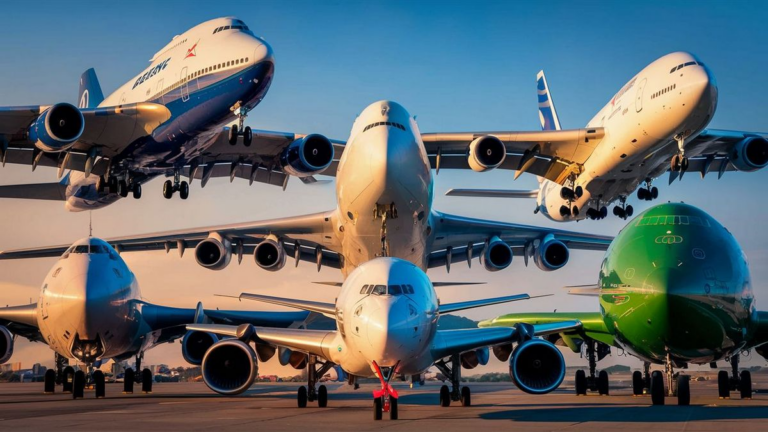When it comes to the question of which aircraft weighs the most, several contenders vie for the title, each boasting impressive dimensions and weights that push the boundaries of aviation engineering. Let’s explore some of the most colossal flying machines ever built.
The Antonov An-225 Mriya
One of the undisputed champions in terms of sheer weight is the Antonov An-225 Mriya. Designed by the Soviet Union’s Antonov Design Bureau in the 1980s, this behemoth was built to carry the Buran spaceplane. With a maximum takeoff weight of over 640 tonnes (1.41 million pounds), the An-225 holds the record for being the heaviest aircraft ever built. Its immense size and capacity make it a crucial asset for transporting oversized cargo, including satellites, generators, and other heavy machinery.
The Lockheed C-5M Super Galaxy
Another contender in the heavyweight category is the Lockheed C-5M Super Galaxy. Operated by the United States Air Force, the C-5M is one of the largest military transport aircraft in the world. With a maximum takeoff weight of approximately 381 tonnes (840,000 pounds), this colossal plane is capable of carrying outsized and oversized cargo over long distances, supporting military operations and humanitarian missions globally.
The Airbus A380
While commercial airliners may not typically be associated with extreme weight, the Airbus A380 stands out as one of the heaviest passenger aircraft ever produced. With a maximum takeoff weight of around 1.2 million pounds (540 tonnes), the A380 is a double-deck, wide-body aircraft capable of carrying up to 853 passengers in a comfortable configuration. Its impressive size and capacity have made it a popular choice for airlines operating high-density routes between major hubs.
The Boeing 747-8
Another heavyweight in the commercial aviation realm is the Boeing 747-8. As the latest and largest iteration of the iconic 747 series, the 747-8 boasts a maximum takeoff weight of approximately 987,000 pounds (447 tonnes). This long-range, wide-body jetliner offers exceptional cargo and passenger-carrying capabilities, making it a versatile option for both commercial and freight operations worldwide.
When it comes to determining which aircraft weighs the most, it ultimately depends on the specific criteria used for measurement. However, the Antonov An-225 Mriya holds the title for the heaviest aircraft ever built, with its unparalleled size and payload capacity setting it apart from the competition. While other aircraft such as the Lockheed C-5M Super Galaxy, Airbus A380, and Boeing 747-8 also boast impressive weights and capabilities, none can match the sheer scale of the An-225. As aviation technology continues to advance, it’s possible that even larger and heavier aircraft may emerge in the future, pushing the boundaries of what is possible in the realm of flight.
vironmental Impact
One crucial aspect often discussed alongside the weight and size of aircraft is their environmental impact. While advancements in aviation technology have led to more fuel-efficient engines and lighter materials, the sheer size of some aircraft can still contribute significantly to carbon emissions and other environmental concerns. Factors such as fuel consumption, emissions per passenger mile, and noise pollution are important considerations in evaluating the environmental footprint of these massive flying machines.
Efficiency and Sustainability
Efforts are underway within the aviation industry to improve the efficiency and sustainability of aircraft operations. This includes research into alternative fuels, such as biofuels and hydrogen, as well as the development of more aerodynamic designs and advanced propulsion systems. By addressing these challenges, the industry aims to mitigate its environmental impact while continuing to meet the growing demand for air travel.
| Aspect | Concern |
|---|---|
| Fuel Consumption | High fuel consumption due to size and weight |
| Emissions | Significant carbon emissions per flight |
| Noise Pollution | Large aircraft can contribute to noise pollution around airports |
Frequently Asked Questions
- Q: Are there regulations in place to limit the environmental impact of large aircraft?
- Q: How do manufacturers balance the need for larger aircraft with environmental concerns?
- Q: What role do advancements in technology play in reducing the environmental footprint of aviation?
See also:






